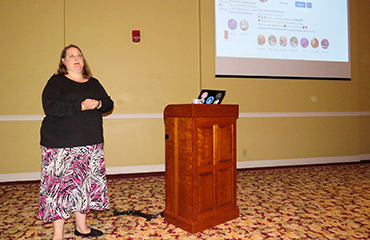
Lander University’s community lecture series resumed on Wednesday, Nov. 2, at the Greenwood Arts Center, with Professor of English Dr. Lillian Craton’s presentation, “The Victorian Freakshow.”
Craton, who has published books and articles on the subject, said that the period from the 1840s to the 1890s was the heyday of the freakshow as a popular form of entertainment.
“The Industrial Revolution kicked off a period of economic and social transformation, and in so doing it created an environment in which the freakshow would thrive.” More leisure time, and more disposable income, led to a demand for more entertainment, she said.
Freaks have always been interesting to people, according to Craton, because “they raise questions about what counts as human.”
The exhibition of the dwarf Charles Stratton by the American showman P.T. Barnum was one of the more successful acts of the time. Christening Stratton “General Tom Thumb,” Barnum brought him to England, and “set the British freak scene on fire.”
The conjoined twins, Chang and Eng Bunker, billed as the “Siamese Twins,” were another famous act, appearing throughout the U.S. and Europe during the 1830s and 1840s, and also later, as middle-aged men. Audiences were drawn by the question of “how someone so fundamentally different from them could also be so similar,” Craton said.
The deformities of Joseph Merrick, the so-called “Elephant Man,” also drew large crowds. When he died, at the age of 27, his skeleton was mounted by the Royal London Hospital, where he had lived, and his soft tissues preserved for study.
One of the many “bearded ladies” of the nineteenth century was Julia Pastrana. After she died in 1860, at the age of 25, her body was preserved through taxidermy, and continued to be displayed.
Concerns about exploitation eventually “hastened the decline of the freakshow,” according to Craton, but the interest shown in the long-running TV series “My 600-lb. Life” shows that the impulse that gave rise to the freakshow is far from dead.
“I suspect the freakshow will always persist,” Craton said.